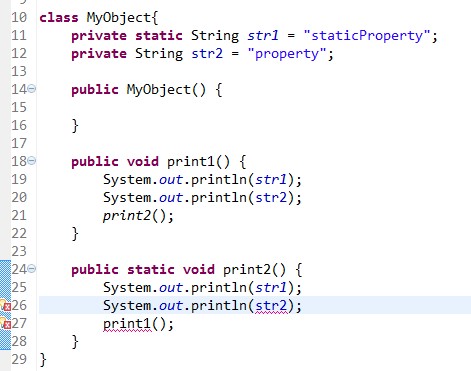(运维)--应用服务器部署
在现有的tomcat+nginx 配置
– add by yx
15.6环境下
目前已经存在了 应用test2已经搭建完成
配置服务器
我们以新建一个test为例
## 进入目录cd /home/tomcat/servers## copy一份 test 服务器cp -R test2 test3cd test3## 查看目录ll ./## war包存放位置 webapps## 日志文件存放 logs## 配置文件存放 conf## 修改对应的端口cd conf## 修改数据源 <Resource 标签,具体可以参考其他项目搭建vim context.xml
查看context.xml
<?xml version="1.0" encoding="UTF-8"?><!--Licensed to the Apache Software Foundation (ASF) under one or morecontributor license agreements. See the NOTICE file distributed withthis work for additional information regarding copyright ownership.The ASF licenses this file to You under the Apache License, Version 2.0(the "License"); you may not use this file except in compliance withthe License. You may obtain a copy of the License athttp://www.apache.org/licenses/LICENSE-2.0Unless required by applicable law or agreed to in writing, softwaredistributed under the License is distributed on an "AS IS" BASIS,WITHOUT WARRANTIES OR CONDITIONS OF ANY KIND, either express or implied.See the License for the specific language governing permissions andlimitations under the License.--><!-- The contents of this file will be loaded for each web application --><Context><!-- Default set of monitored resources. If one of these changes, the --><!-- web application will be reloaded. --><WatchedResource>WEB-INF/web.xml</WatchedResource><WatchedResource>${catalina.base}/conf/web.xml</WatchedResource><!-- Uncomment this to disable session persistence across Tomcat restarts --><!--<Manager pathname="" />--><Resource name="jdbc/service"type="com.mchange.v2.c3p0.ComboPooledDataSource"maxPoolSize="30" minPoolSize="1" acquireIncrement="1" maxIdleTime="120" initialPoolSize="1"factory="org.apache.naming.factory.BeanFactory"user="inno_bdsp_dev2" password="inno_bdsp_dev2"driverClass="com.mysql.jdbc.Driver"jdbcUrl="jdbc:mysql://192.168.15.12:3306/inno_bdsp_dev2?characterEncoding=utf8"/></Context>
查看server.xml
<?xml version="1.0" encoding="UTF-8"?><!--Licensed to the Apache Software Foundation (ASF) under one or morecontributor license agreements. See the NOTICE file distributed withthis work for additional information regarding copyright ownership.The ASF licenses this file to You under the Apache License, Version 2.0(the "License"); you may not use this file except in compliance withthe License. You may obtain a copy of the License athttp://www.apache.org/licenses/LICENSE-2.0Unless required by applicable law or agreed to in writing, softwaredistributed under the License is distributed on an "AS IS" BASIS,WITHOUT WARRANTIES OR CONDITIONS OF ANY KIND, either express or implied.See the License for the specific language governing permissions andlimitations under the License.--><!-- Note: A "Server" is not itself a "Container", so you may notdefine subcomponents such as "Valves" at this level.Documentation at /docs/config/server.html--><Server port="6080" shutdown="SHUTDOWN"><Listener className="org.apache.catalina.startup.VersionLoggerListener" /><!-- Security listener. Documentation at /docs/config/listeners.html<Listener className="org.apache.catalina.security.SecurityListener" />--><!--APR library loader. Documentation at /docs/apr.html --><Listener className="org.apache.catalina.core.AprLifecycleListener" SSLEngine="on" /><!-- Prevent memory leaks due to use of particular java/javax APIs--><Listener className="org.apache.catalina.core.JreMemoryLeakPreventionListener" /><Listener className="org.apache.catalina.mbeans.GlobalResourcesLifecycleListener" /><Listener className="org.apache.catalina.core.ThreadLocalLeakPreventionListener" /><!-- Global JNDI resourcesDocumentation at /docs/jndi-resources-howto.html--><GlobalNamingResources><!-- Editable user database that can also be used byUserDatabaseRealm to authenticate users--><Resource name="UserDatabase" auth="Container"type="org.apache.catalina.UserDatabase"description="User database that can be updated and saved"factory="org.apache.catalina.users.MemoryUserDatabaseFactory"pathname="conf/tomcat-users.xml" /></GlobalNamingResources><!-- A "Service" is a collection of one or more "Connectors" that sharea single "Container" Note: A "Service" is not itself a "Container",so you may not define subcomponents such as "Valves" at this level.Documentation at /docs/config/service.html--><Service name="Catalina"><!--The connectors can use a shared executor, you can define one or more named thread pools--><!--<Executor name="tomcatThreadPool" namePrefix="catalina-exec-"maxThreads="150" minSpareThreads="4"/>--><!-- A "Connector" represents an endpoint by which requests are receivedand responses are returned. Documentation at :Java HTTP Connector: /docs/config/http.htmlJava AJP Connector: /docs/config/ajp.htmlAPR (HTTP/AJP) Connector: /docs/apr.htmlDefine a non-SSL/TLS HTTP/1.1 Connector on port 8080--><Connector URIEncoding="UTF-8" port="6099" protocol="org.apache.coyote.http11.Http11AprProtocol"connectionTimeout="20000"redirectPort="8443"emptySessionPath="true" /><!-- A "Connector" using the shared thread pool--><!--<Connector executor="tomcatThreadPool"port="8080" protocol="HTTP/1.1"connectionTimeout="20000"redirectPort="8443" />--><!-- Define a SSL/TLS HTTP/1.1 Connector on port 8443This connector uses the NIO implementation with the JSSE engine. Whenusing the JSSE engine, the JSSE configuration attributes must be used.--><!--<Connector port="8443" protocol="org.apache.coyote.http11.Http11NioProtocol"maxThreads="150" SSLEnabled="true"><SSLHostConfig><Certificate certificateKeystoreFile="conf/localhost-rsa.jks"type="RSA" /></SSLHostConfig></Connector>--><!-- Define a SSL/TLS HTTP/1.1 Connector on port 8443 with HTTP/2This connector uses the APR/native implementation. When using theAPR/native implementation or the OpenSSL engine with NIO or NIO2 thenthe OpenSSL configuration attributes must be used.--><!--<Connector port="8443" protocol="org.apache.coyote.http11.Http11AprProtocol"maxThreads="150" SSLEnabled="true" ><UpgradeProtocol className="org.apache.coyote.http2.Http2Protocol" /><SSLHostConfig><Certificate certificateKeyFile="conf/localhost-rsa-key.pem"certificateFile="conf/localhost-rsa-cert.pem"certificateChainFile="conf/localhost-rsa-chain.pem"type="RSA" /></SSLHostConfig></Connector>--><!-- Define an AJP 1.3 Connector on port 8009 --><!--Connector port="8009" protocol="AJP/1.3" redirectPort="8443" /--><!-- An Engine represents the entry point (within Catalina) that processesevery request. The Engine implementation for Tomcat stand aloneanalyzes the HTTP headers included with the request, and passes themon to the appropriate Host (virtual host).Documentation at /docs/config/engine.html --><!-- You should set jvmRoute to support load-balancing via AJP ie :<Engine name="Catalina" defaultHost="localhost" jvmRoute="jvm1">--><Engine name="Catalina" defaultHost="localhost"><!--For clustering, please take a look at documentation at:/docs/cluster-howto.html (simple how to)/docs/config/cluster.html (reference documentation) --><!--<Cluster className="org.apache.catalina.ha.tcp.SimpleTcpCluster"/>--><!-- Use the LockOutRealm to prevent attempts to guess user passwordsvia a brute-force attack --><Realm className="org.apache.catalina.realm.LockOutRealm"><!-- This Realm uses the UserDatabase configured in the global JNDIresources under the key "UserDatabase". Any editsthat are performed against this UserDatabase are immediatelyavailable for use by the Realm. --><Realm className="org.apache.catalina.realm.UserDatabaseRealm"resourceName="UserDatabase"/></Realm><Host name="localhost" appBase="webapps"unpackWARs="true" autoDeploy="true"><!-- SingleSignOn valve, share authentication between web applicationsDocumentation at: /docs/config/valve.html --><!--<Valve className="org.apache.catalina.authenticator.SingleSignOn" />--><!-- Access log processes all example.Documentation at: /docs/config/valve.htmlNote: The pattern used is equivalent to using pattern="common" --><Valve className="org.apache.catalina.valves.AccessLogValve" directory="logs"prefix="localhost_access_log" suffix=".txt"pattern="%h %l %u %t "%r" %s %b" /></Host></Engine></Service></Server>
**查看对应的配置文件 server.conf **
#tomcat实例目录#export CATALINA_BASE=/home/alpha/servers/"$NAME"#设置JVM内存大小export JAVA_OPTS="-Xms2048m -Xmx2048m"#这里指定的是项目所独有的环境变量#export RUN_ENV="test"export JAVA_OPTS="$JAVA_OPTS -Dspring.profiles.active=test"#远程调试export JAVA_OPTS="$JAVA_OPTS -Xrunjdwp:transport=dt_socket,address=46900,server=y,suspend=n"#jmxexport JAVA_OPTS="$JAVA_OPTS -Dcom.sun.management.jmxremote.port=45660 -Dcom.sun.management.jmxremote.ssl=false -Dcom.sun.management.jmxremote.authenticate=false -DrestTable=false "
## 修改对应的端口 因为服务器中部署了多台,所以端口需要不一样 ,修改点2处 Server port + Http prot端口 我这里是 http-->6099vim server.xml## 配置启动参数、远程调用等端口,如果不需要可以注释vim server.xml## webapps 因为之前的war 在里面,就没有添加,如果是其他项目,直接更换就好了## 启动项目--发现没有bin目录 因为数据被bin隐藏了。建立一个软连接即可ln -s /etc/init.d/tomcat8 test3## 查看日志cd /home/tomcat/servers/test3/logs## 清理之前的日志rm -rf *## 启动项目service test3 statusservice test3 start## 查看日志tail -f catalina.out## 没报错表示成功启动
##配置nginx
## 配置nginx 进入主目录 root 权限cd /usr/local/nginx## 开始配置nginxcd conf## 复制配置文件cp test2.conf test3.conf## 编辑test3.confvim test3.conf
test3.conf 具体如下
#test2server {listen 80; # 默认监听80端口server_name yx.test3.service.cn; ## yx 这个表示配置的域名访问charset utf-8;#access_log logs/host.access.log main;error_page 405 = $uri;location / {root html/test;index index.html index.html;}location /test/ {proxy_redirect off;proxy_set_header Host $host;proxy_set_header X-Real-IP $remote_addr;proxy_set_header X-Forwarded-For $proxy_add_x_forwarded_for;client_max_body_size 55m;proxy_read_timeout 120;proxy_pass http://test3; ## yx 这个与 nginx.config 的upstream配合使用}location /test_res {expires 3d; ## 静态资源缓存时间alias /data2/test2 ;## 因为这里是和test2共用的,所以就直接使用即可,其他的直接修改即可 。动静分离autoindex on;}#error_page 404 /404.html;error_page 500 502 503 504 /50x.html;location = /50x.html {root html;}}##配置nginx 并且引入test3.confvim nginx.confupstream test3{server 192.168.15.6:6099;}include test3.conf;## 重启nginx## nginx 平滑重启/usr/local/nginx/sbin/nginx -s reload
通知运维将我们配置的域名统一
yx.test3.service.cn 配置进入dns 即可。
如果本地想要看效果,直接配置hosts 也可以
ip yx.test3.service.cn
就可以直接访问了。


































还没有评论,来说两句吧...